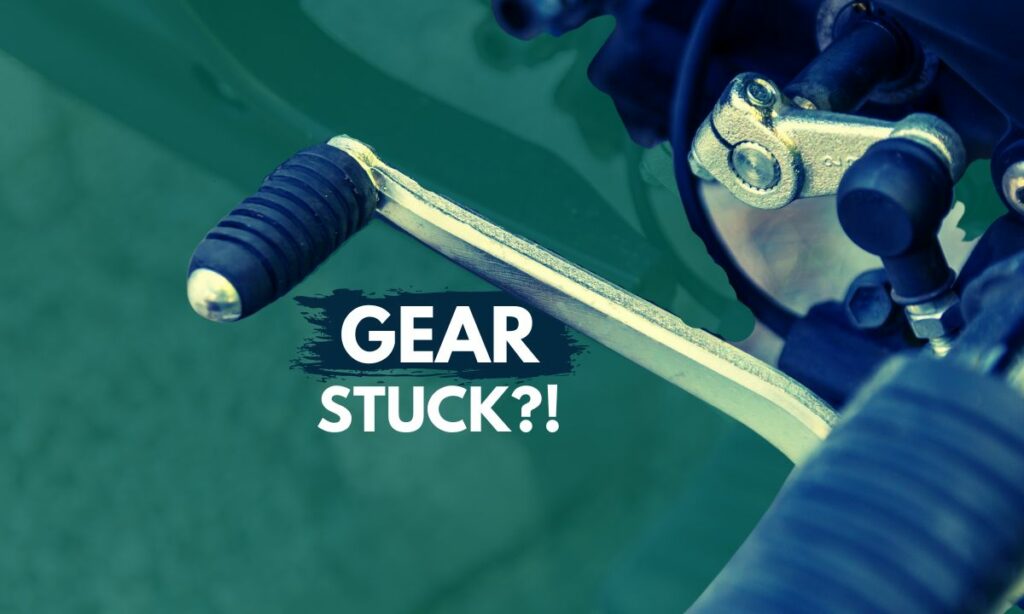You are facing trouble in shifting gears in your motorcycle and are not sure how to go about it.
Or, you often hear a clicking noise whenever you are changing the gears. The gear change is either not smooth or the gear does not shift properly at all.
Well then. Let’s find out what are the main causes and the remedies for that.
If your gear is not shifting either up or down, then there is a problem with one of these four things:
- Clutch – Not enough slack or too much slack in the cable.
- Oil/lubrication – The oil level is low or you have used a deteriorated quality oil.
- Chain – chain slack and chain sprocket issues
- Transmission Gear – Seized Transmission, a foreign object stuck in the gear assembly.
Let’s check each of these problems one by one.
#1. Incorrect Clutch freeplay
Do you usually ride in heavy traffic daily?
Do you change the gears at extreme frequency?
If yes, then too many gear shifts would have put a strain on – the clutch, the clutch wire, and the clutch assembly.

One of the first things to make sure is that your clutch cable is not too hard-pressed while changing gears.
Unless there has been external damage, in the case of hard changing of gears, the most usual and common reason is clutch slack problems.
Frequent gear change and hence the frequent use of the clutch makes the clutch free-play to increase.
The loosened cable might have resulted in the clutch not being fully engaged even if the gear is completely engaged.
In other words, your transmission is working perfectly fine, but, the clutch cable is causing problems while shifting the gears.
Okay, I got it. The clutch slack is the problem. What is the solution then?
How to fix
The solution is to adjust the clutch cable free-play.
You need to ensure that the clutch cable has enough slack.
Neither too tight nor too loose.

A simple thumb rule is to maintain the clutch slack at about 2mm to 3mm.
Check the specifications in your bike’s user manual before making this adjustment.
If you do not have any company specifications, try adjusting for 2mm to 3mm.
Check whether the motorcycle works fine, if you feel it is still too tight or loosened, adjust accordingly.
#2. Oil level and quality problems
The next possible reason why you are facing problems in gear shifting might be because of the engine oil.
Either the oil level is low or the oil you are using is of deteriorated quality.
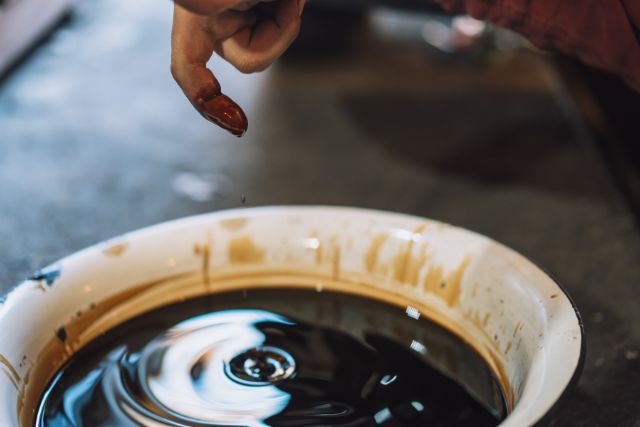
Most motorcycles use wet clutches that operate well only when bathed with engine oil.
The lubrication is important. Extremely so.
That’s why, the type of oil used for lubrication matters so much.
If either the oil levels are low or if it is of poor quality, then you must change it.
How to fix
Well, first we need to ask ourselves when was the last time the oil was changed in the motorcycle?
Here is a simple thumb rule for the frequency of oil change:
| Type of Oil | Frequency of Oil Change |
|---|---|
| Mineral Oil | 2000 miles |
| Semi-Synthetic Oil | 5000 miles |
| Synthetic Oil | 8000 miles |
So, if it has been longer than the recommended oil change frequency, you must change the oil.
Another approach.
Check the current engine oil level and the oil quality.
To check the oil level, take out the oil gauge and notice the wet mark.

If the wet mark lies between the ‘full’ and ‘low’ marks in the gauge, then the oil level is good.
If it is falling below the ‘low’ mark, then you need to top up or replace the oil.
Next, check the oil quality.
Take the dipstick gauge and notice the oil color, smell, and stickiness.
Here is what the oil color tells about its condition:
| Engine Oil Color | What It Means |
|---|---|
| Amber or yellowish | Oil is new |
| Brown or lighter | Oil is in good condition |
| Black or darker | Oil is in bad condition |
| Green or white tinges | Coolant is mixed with engine oil |
Make sure the oil is brown or lighter in color.
Next, smell the oil.
There should be no burnt smell coming from the engine oil.
Next, touch the oil with your fingers. The oil should not be sticky in condition for it to be of good quality and in working condition.
If any of the above tests fail, you must replace the oil.
#3. Chain slack and sprocket issues
The two main concerns with the chain are chain slack and chain sprocket issues.
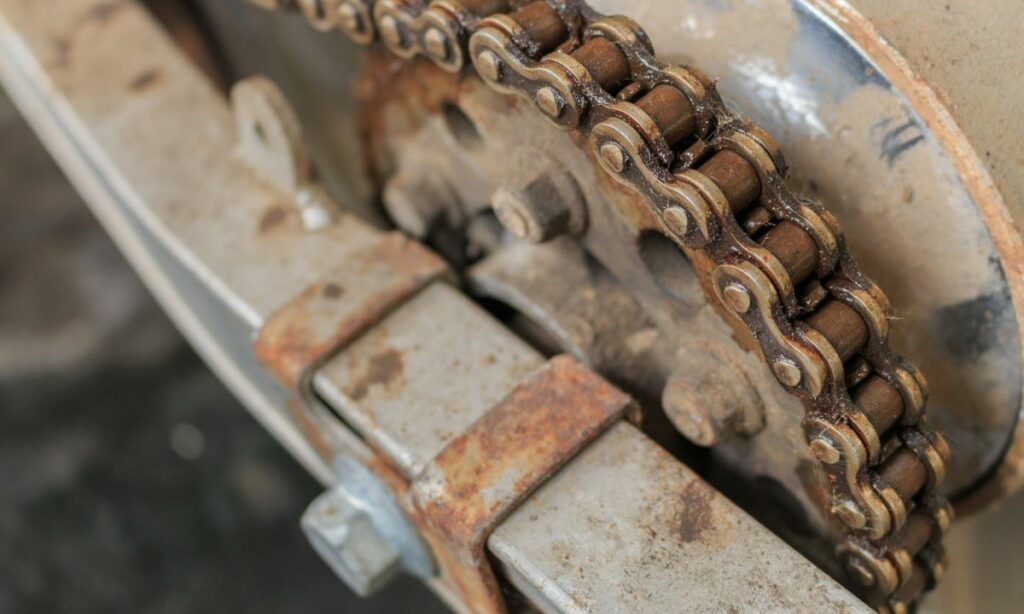
These two are the possible culprits causing gear change issues in the motorcycle.
For sprocket issues, it mostly stems from having the sprockets and the front sprocket area dirty.
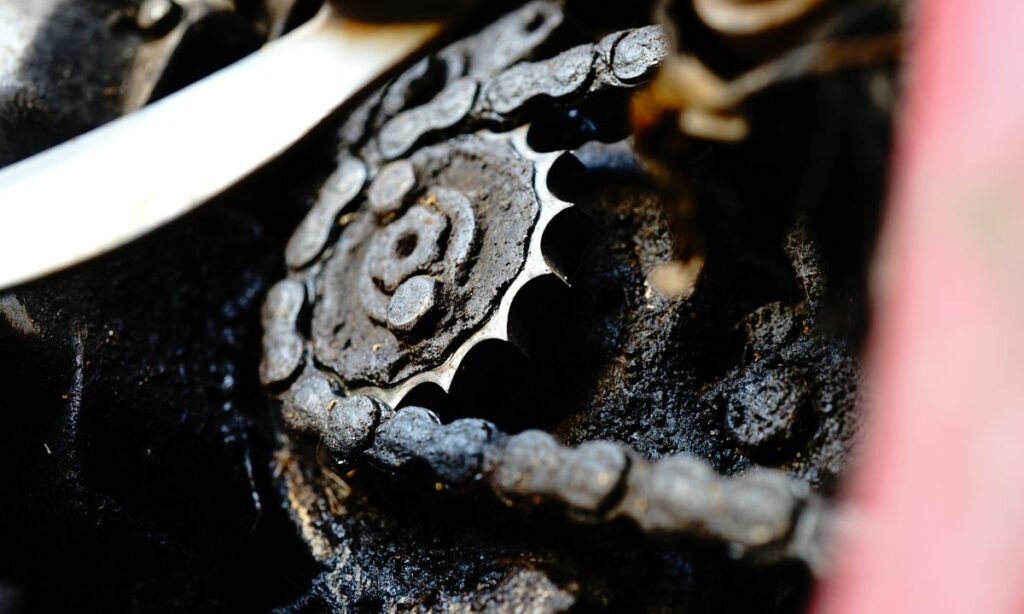
As for chain slack, the chain might have loosened.
Also, if the chain is dirty and not lubricated well – it needs to be addressed as well.
One big indicator of chain problems is noise.
If there is huge noise coming from the chain drive, then you can be sure the chain is the cause for gear shifting problems.
So how to go about it?
Here are the steps.
How to fix
First, check if the chain drive is dirty.
If yes, clean the chain.
You can use as simple as a WD-40 to clean the chain.
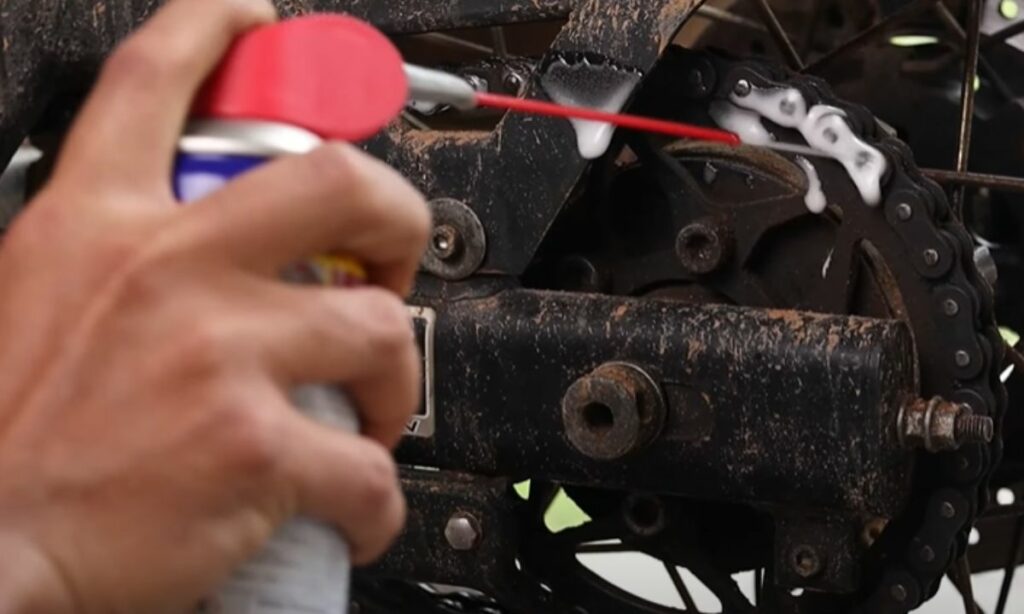
Second, clean the sprockets and front sprocket area.
If they are clean, you can move forward skipping this step.
Third, adjust the chain slack.
You can refer to our detailed guide on measuring and adjusting the chain slack on a motorcycle.
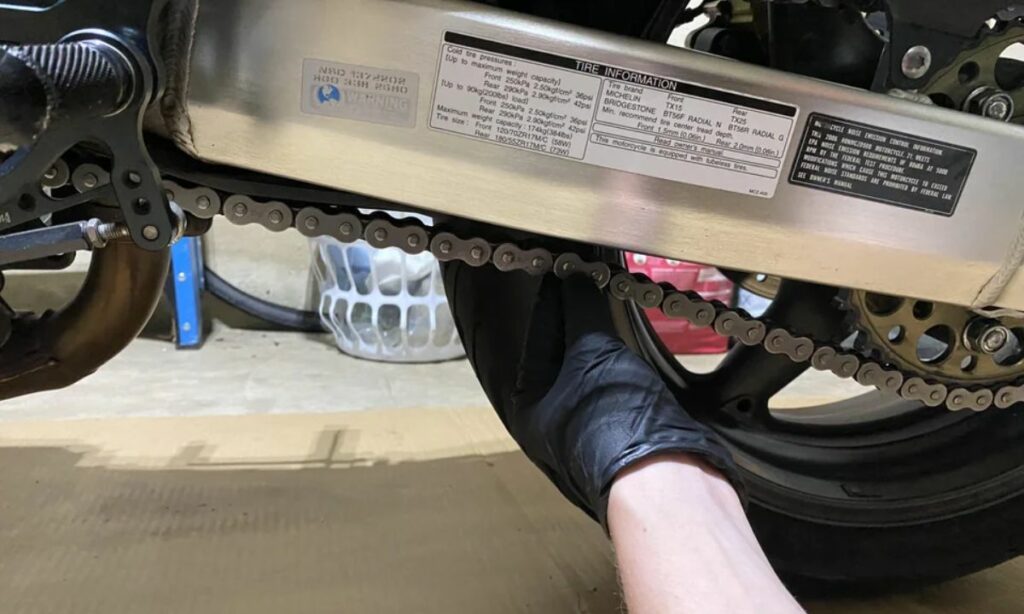
For the optimum slack levels refer to the owners manual
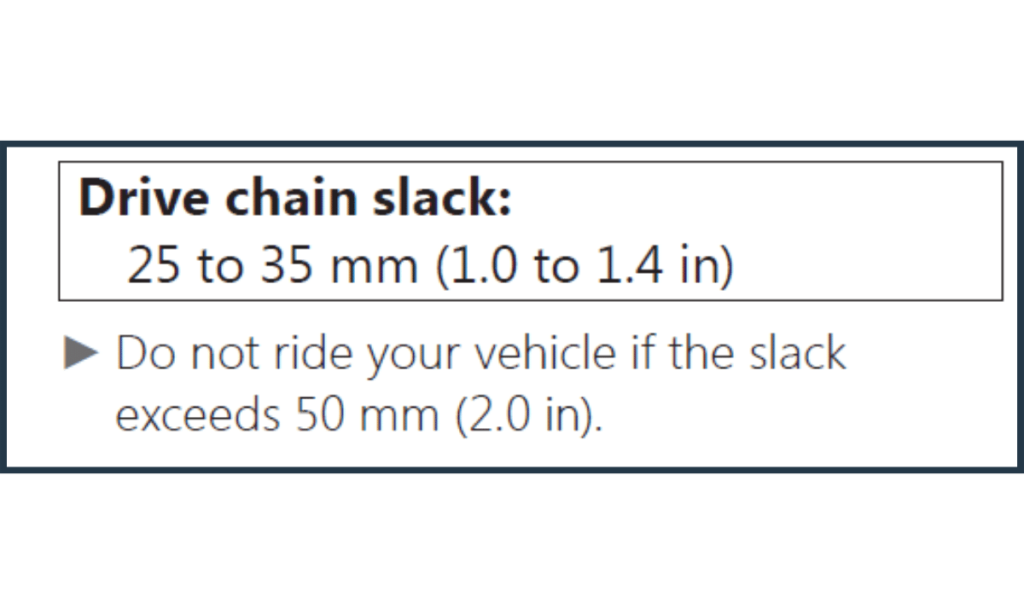
If not, use a thumb rule of 0.8 to 1.2 inches (20 to 30 mm) for chain slack (only as a last resort).
Fourth and last, lubricate the chain drive.
Use a high-quality chain lubricant.
And spray it on the chain drive generously.
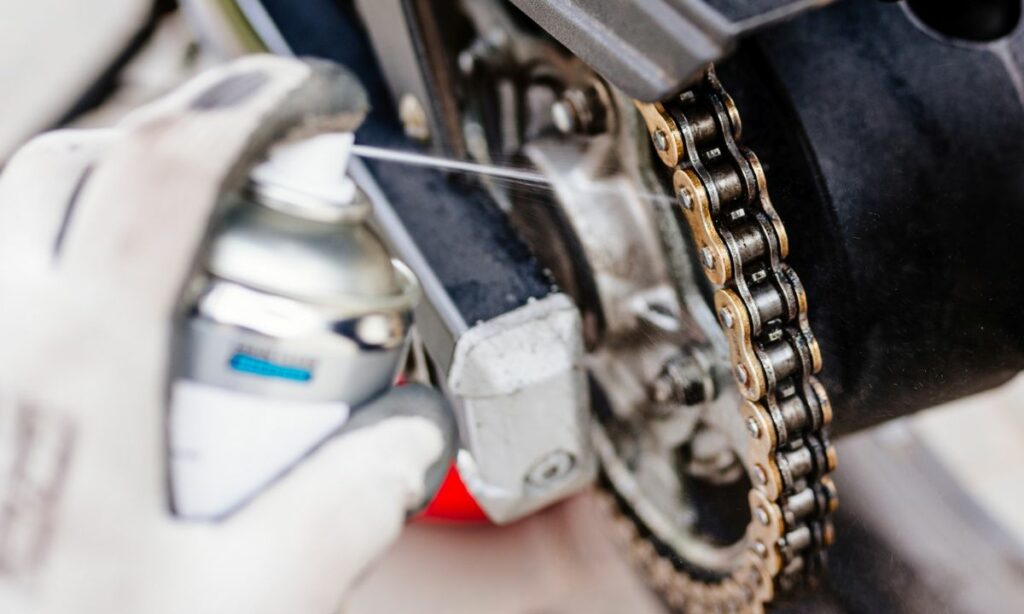
Make sure all the links and rollers are covered with the lube.
Roll the chain drive a few times to spray it evenly across the chain teeth.
#4. Transmission gear problems
Problems in transmission gears can also cause issues in gear changing in your motorcycle.
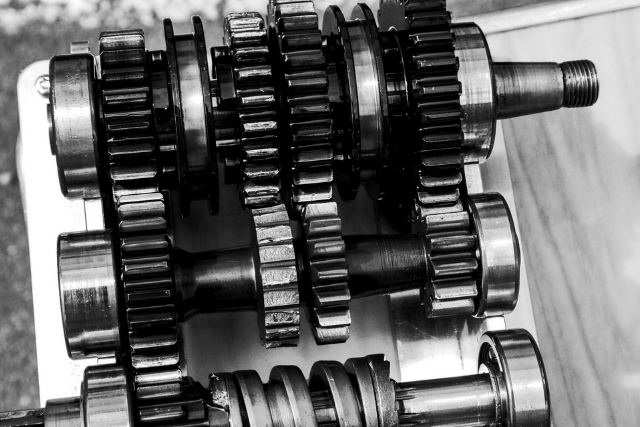
There might be problems arising from the transmission gear and shift shafts.
Here are the major transmission gear problems causing the motorcycle unable to shift gears:
- seized transmission gear
- a foreign object stuck between the gears
- incorrect assembly of transmission gears
- bent shift shafts
How to fix
Fixing transmission gear problems is not beginner friendly.
The expertise and the labor required are quite high and intense.
So, if you suspect any of the above transmission gear problems exists, take your motorcycle to the service shop or the dealer as soon as possible.
Summing Up
Let’s recap. Here are the reasons that are creating issues in your motorcycle while changing the gears.
- Clutch – loosened clutch cable
- Oil/lubrication – low oil levels, deteriorated oil quality
- Chain – chain slack and chain sprocket issues
- Transmission Gear – seized transmission, a foreign object stuck in the gear, incorrect assembly.
Irrespective of the diagnosis, it is better for you to take your motorcycle to the mechanic and get it checked.
Helpful read: motorcycle gear shifting tips
Preventive Measures
Apart from understanding the reasons for gear-shifting problems, we should also be aware of the steps we need to take to prevent the same problem from arising again.
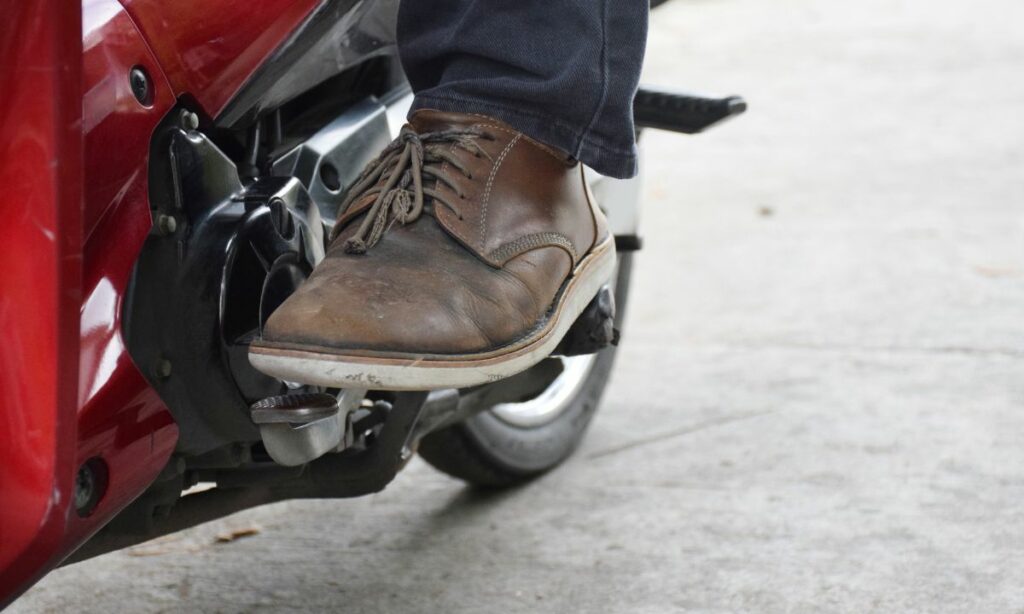
Here are the preventive measures that can be taken to prevent facing issues in changing the gears of our motorcycle.
- Do not press hard on the gear levers while changing the gears up or down. The bikes of today have smoother clutches that help in releasing the gear smoothly.
- Release the clutch smoothly rather than a sudden release. This will facilitate smoother engagement of the gear rather than a blunt one which might cause issues in the Transmission Gear.
- Change the engine oil regularly. The recommended frequency for oil change is – 2000 miles for mineral oil; 5000 miles for semi-synthetic oil; and 8000 miles for synthetic oil.
- Use good quality oil. If the viscosity of the oil is not right, the lubrication is not right for the motorcycle.
- Get your motorcycle serviced frequently.
